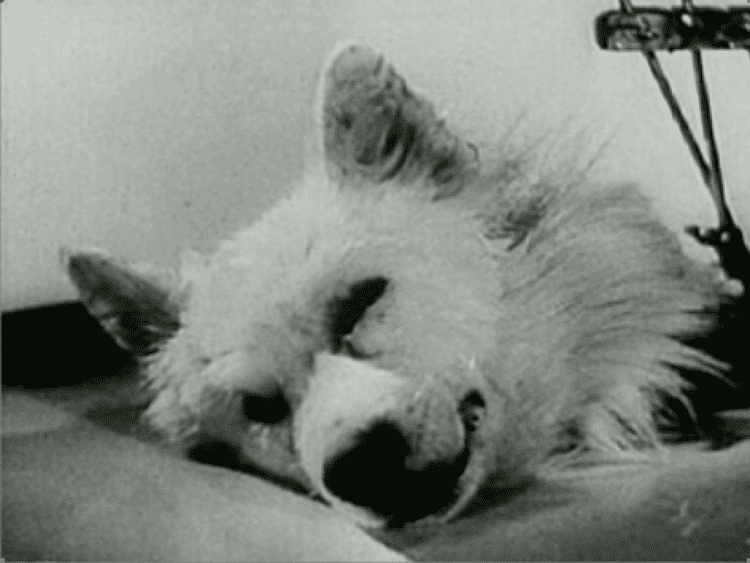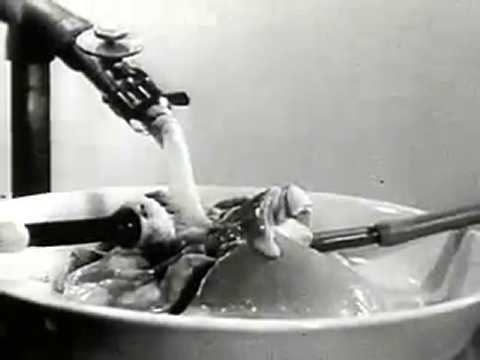Experiments in the Revival of Organisms
7.1 /10 2 Votes
Director D.I. Yashin Cinematography E.V. Kashina Genres Documentary, Short Film | 7/10 IMDb Duration Language RussianEnglish | |||||||||||||||||||||||||||||||||
 | ||||||||||||||||||||||||||||||||||
Cast J. B. S. Haldane Writer S.S. Bryukhonenko (scenario) Release date 1940 Starring Sergei Brukhonenko Narrated J. B. S. Haldane (English) Production company Moscow Studio of Technical Films Languages Russian, English Filming locations Voronezh, Russia Color Black and White Similar Sergei Brukhonenko, J B S Haldane, Vladimir Demikhov | ||||||||||||||||||||||||||||||||||
Experiments in the revival of organisms russian dog head experiment
Experiments in the Revival of Organisms (Russian: Эксперименты по оживлению организма) is a 1940 motion picture which documents Soviet research into the resuscitation of clinically dead organisms. It is available from the Prelinger Archives, and it is in the public domain. The operations are credited to Doctor Sergei Brukhonenko and Boris Levinskovsky, who were demonstrating a special heart-lung apparatus called the autojektor (or autojector), also referred to as the heart-lung machine, to the Second Congress of Russian Pathologists in Moscow. It was filmed at the Institute of Experimental Physiology and Therapy, which is also in Moscow. The heart-lung machine was designed and constructed by Brukhonenko, whose work in the video is said to have led to the first operations on heart valves. The autojektor device demonstrated in the film is similar to modern ECMO machines, as well as the systems commonly used for renal dialysis in modern nephrology.
Contents
- Experiments in the revival of organisms russian dog head experiment
- Experiments in the revival of organisms
- Synopsis
- Reaction
- In popular culture
- References

Experiments in the revival of organisms
Synopsis

The film depicts and discusses a series of medical experiments. It begins with British scientist J. B. S. Haldane appearing and discussing how he has personally seen the procedures carried out in the film and have saved lives during the war. The experiments start with a heart of canine, which is shown being isolated from a body; four tubes connected are then connected to the organ. Using an apparatus, the heart beats in the same manner as if it were in a living organism. The film then shows a lung in a tray, which is operated by bellows that oxygenate the blood.

Following the lung scene, the audience is then shown a heart-lung machine, composed of a pair of diaphragm linear pumps, venous and arterial, exchanging oxygen with a water reservoir. It is then seen supplying a canine head with oxygenated blood. The head is presented with external stimuli, which it responds to. Finally, a dog is brought to clinical death (depicted mostly via a graphical plot of lung and heart activity) by draining all blood from it. It is then left for ten minutes and connected to the heart-lung machine, which gradually returns the blood into the animal's circulation. After several minutes, the heart fibrillates, then restarts a normal rhythm. Respiration likewise resumes and the machine is removed. Over the ensuing ten days, the dog recovers from the procedure and continues living a healthy life. According to the film, several dogs were brought back to life using this method, including one which is an offspring of parents who were both also resuscitated.
Reaction

Brukhonenko's decapitation experiment was remarked upon by George Bernard Shaw.
Brukhonenko developed a new version of the autojektor (for use on humans) in the same year; it can be seen today on display at the Museum of Cardiovascular Surgery at the Bakulev Scientific Center of Cardiovascular Surgery in Russia. Brukhonenko was posthumously awarded the prestigious Lenin Prize.
Some commentators have questioned the film's authenticity, given that none of the more dubious experiments are shown in any full-frame shots. According to some scientists who claim to have seen the experiments in the film, the severed dog head only survived for a few minutes when attached to the artificial heart, as opposed to the hours claimed in the film.
In popular culture
References
Experiments in the Revival of Organisms WikipediaExperiments in the Revival of Organisms IMDb Experiments in the Revival of Organisms themoviedb.org
